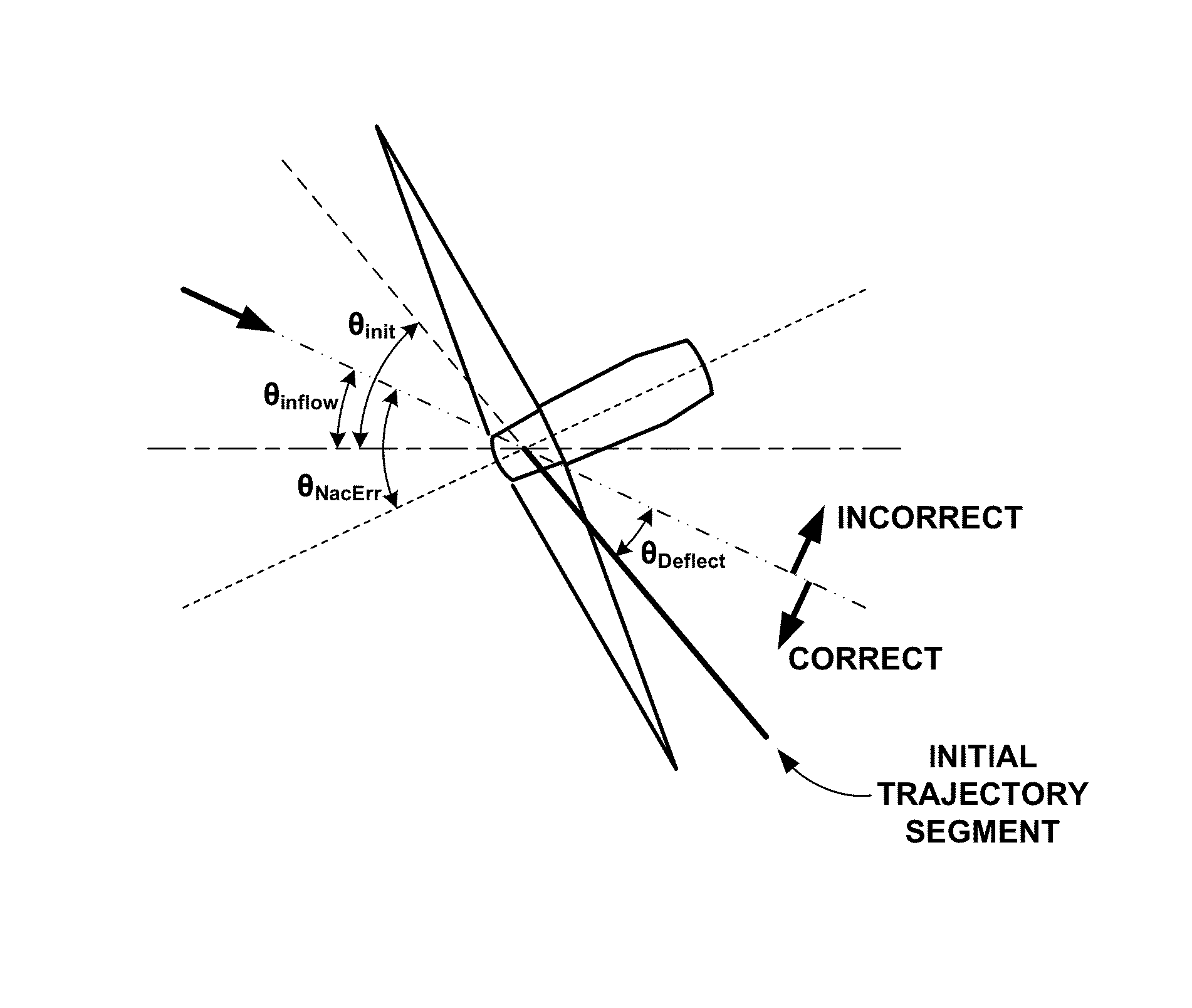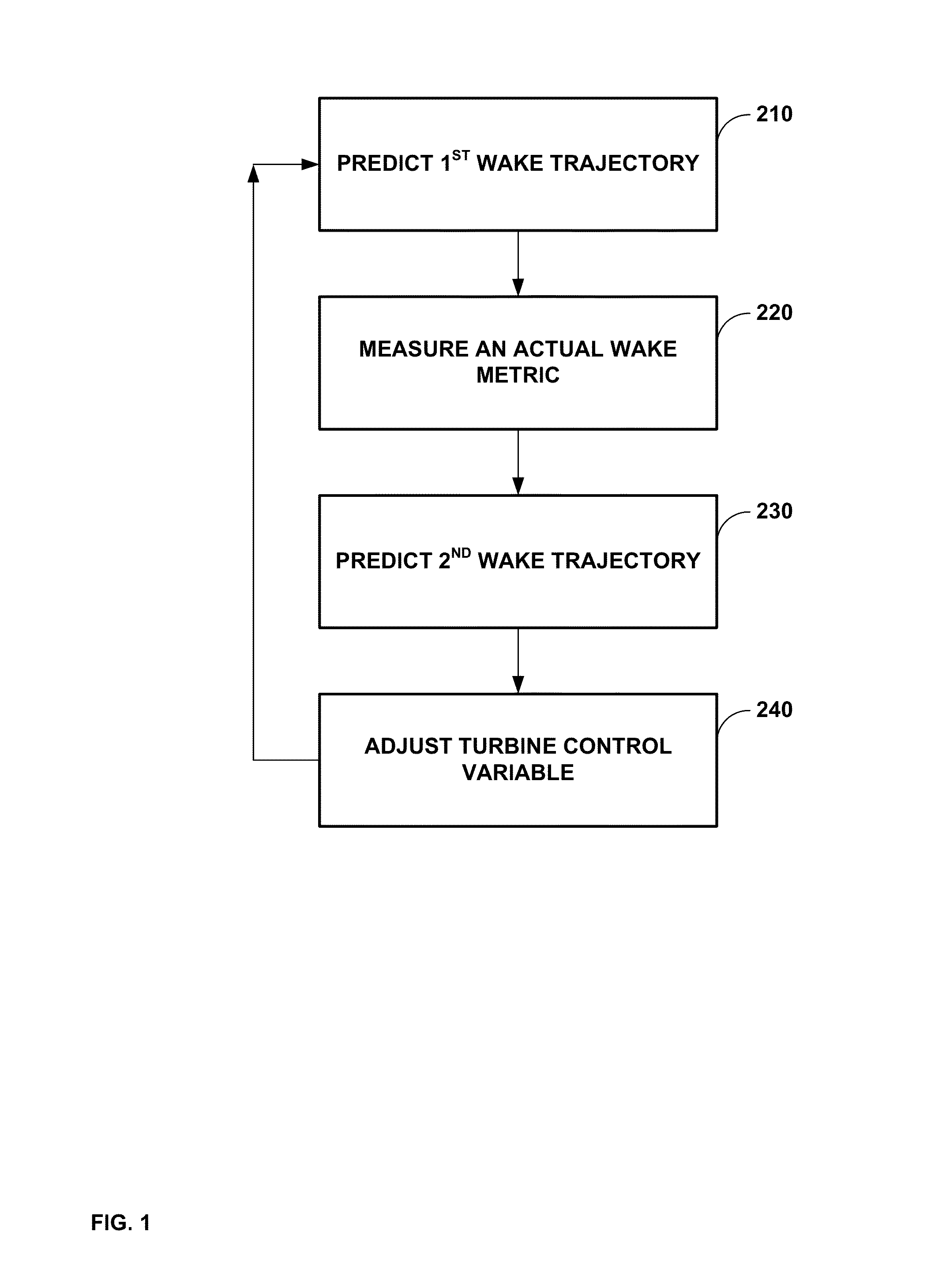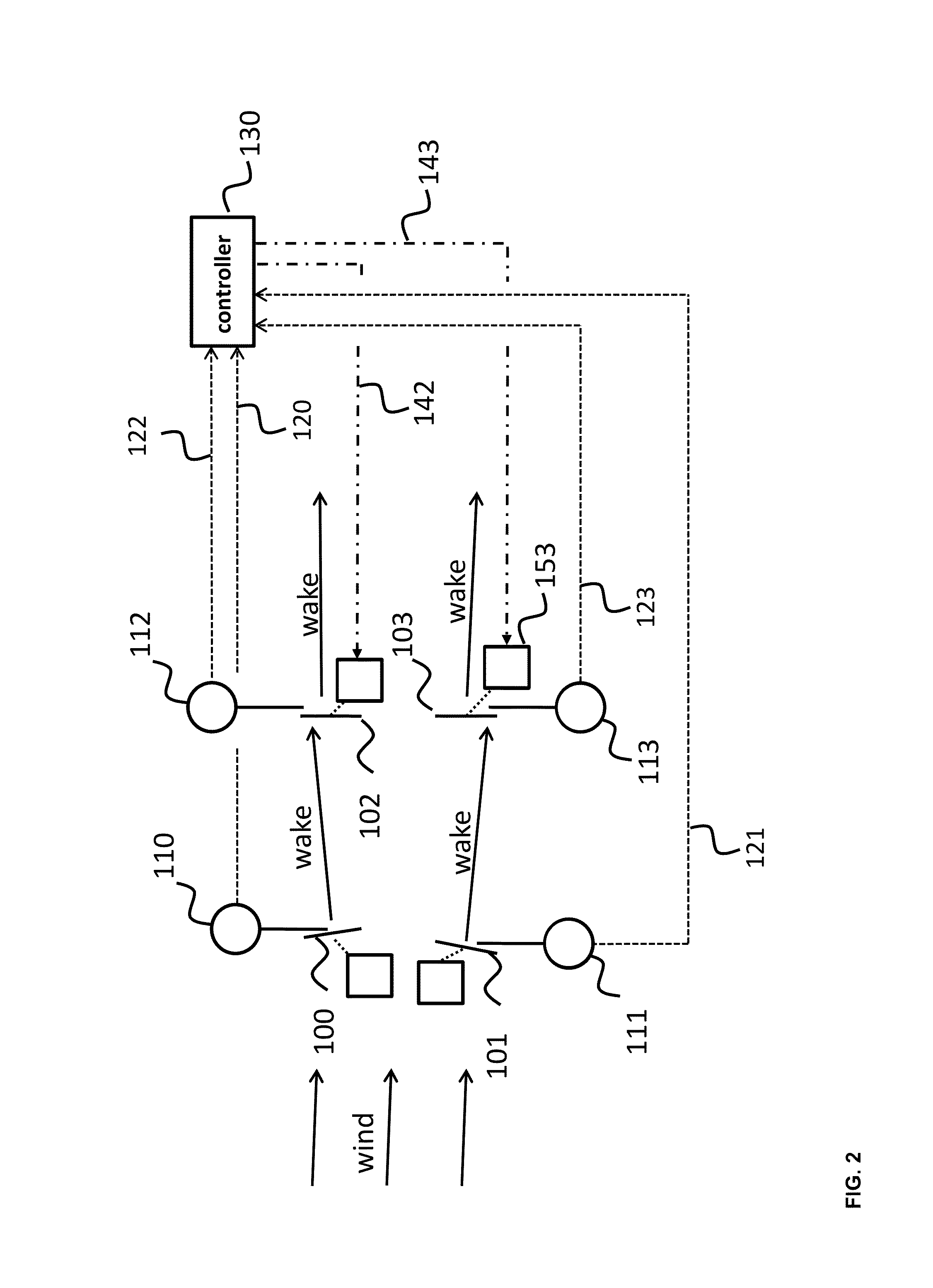Methods and systems for wind plant power optimization
a wind power plant and optimization technology, applied in active/predictive/anticipative control, mechanical equipment, machines/engines, etc., can solve the problems of inability to respond quickly enough to make a sustainable improvement, the complexity of wind and turbine wake interaction dynamically occurring in the actual atmospheric environment of the wind power plant, and the negative impact of performan
- Summary
- Abstract
- Description
- Claims
- Application Information
AI Technical Summary
Benefits of technology
Problems solved by technology
Method used
Image
Examples
example a
[0057]An example of how separate subweight computations may be performed follows below. Note that in this example, when a weighting function applies to a single wake trajectory, the total subweight value may be the sum of a computed penalty (described below) for each trajectory in the particle.
[0058]Deflection: In this example method of a subweight computation, a first subweight is meant to penalize an initial wake angle (θinit), which conflicts with assumptions about the relationship between yaw misalignment and the deflection of the wake with respect to the inflow direction. An assumption is made that the direction of the deflection is consistent across turbines, however, as illustrated in FIG. 5.
[0059]Referring to FIG. 5, θinflow is defined as the angle of the inflow angle with respect to a reference axis shown as a short then long dashed horizontal line in FIG. 5, while θNacErr is defined as the angle between the yaw alignment of the turbine with respect to the inflow direction....
example b
[0070]Based on the features described above, a particle filter method was tested to determine the method's capabilities at predicting wind plant turbine wake locations. This testing was enabled by the use of a high fidelity wind plant simulation tool developed at the National Renewable Energy Laboratory (NREL): the Simulator for Onshore / Offshore Wind Farm Applications (SOWFA). Within SOWFA, several wind plant scenarios were carried out, utilizing virtual turbine measurements (such as nacelle wind speed, wind direction, and blade bending), and these computational fluid dynamic (CFD) outputs were used to run the particle filtering method described above. In addition, horizontal slices from the flow-field at hub height were extracted, in which turbine wakes are clearly visible and provide a way to evaluate the performance of the particle filter technique.
[0071]Regarding the simulation tool utilized for the following experiments, SOWFA is a CFD tool used to model wind turbines in a flow...
example 1
[0100]A method comprising: receiving, by a computing system, at least one sensor measurement, wherein the at least one sensor measurement comprises at least one of a wind speed measurement, or a wind direction measurement; determining, by the computing system, using a stochastic filter, and based on the at least one sensor measurement, at least one predicted attribute of a wake generated by a wind turbine, wherein the wind turbine is one of a plurality of wind turbines of a wind plant; modifying, by the computing system and based on the at least one predicted attribute of the wake, at least one wind turbine control variable for at least one wind turbine of the plurality of wind turbines; and outputting, by the computing system, the at least one wind turbine control variable.
PUM
 Login to View More
Login to View More Abstract
Description
Claims
Application Information
 Login to View More
Login to View More - R&D
- Intellectual Property
- Life Sciences
- Materials
- Tech Scout
- Unparalleled Data Quality
- Higher Quality Content
- 60% Fewer Hallucinations
Browse by: Latest US Patents, China's latest patents, Technical Efficacy Thesaurus, Application Domain, Technology Topic, Popular Technical Reports.
© 2025 PatSnap. All rights reserved.Legal|Privacy policy|Modern Slavery Act Transparency Statement|Sitemap|About US| Contact US: help@patsnap.com



